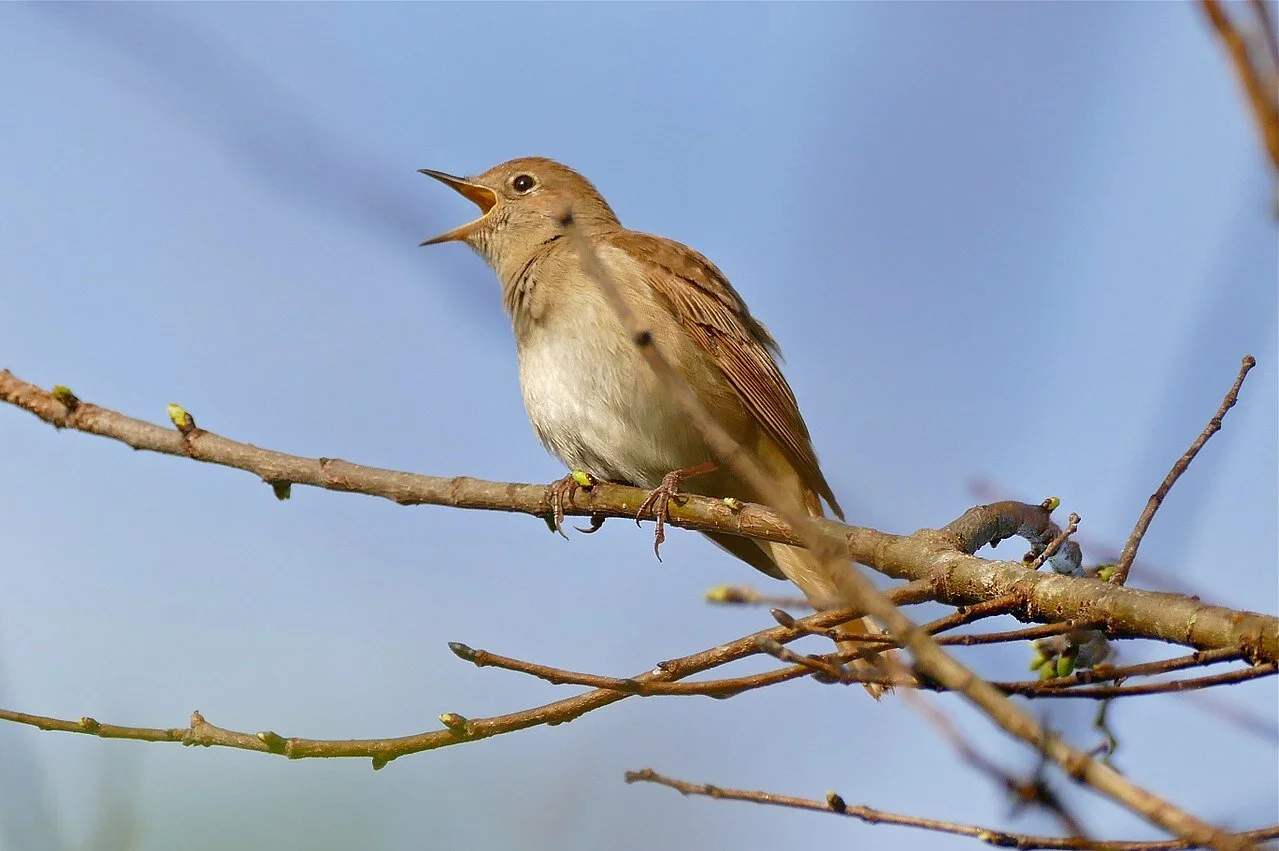16 June 2021
The nightingale (Luscinia megarhynchos) is a migratory songbird common throughout Eurasia that winters in Sub-Saharan Africa. The bird is so called because it also sings at night, not just during the day.
The name can be traced back to the Old English nihtegale, from niht (night) + galan (to sing). The word appears in a number of Latin–Old English glossaries; one of the earliest is the Corpus Glossary from the early eighth century:
Achalantis . uel luscinia uel roscinia nehtęgale
(The < ę > in the manuscript is a Latin character that represents the ligature more commonly written as < æ >.)
The insertion of the / n / in an unstressed, middle syllable of trisyllabic words before a / g /, / dʒ /, or / d / is a typical development in Middle English; we also see it in words like messenger, popinjay, and colander. The insertion eases the transition between the unstressed vowel and the following consonant.
And we can see this transition happening in one of the earlier Middle English appearances of the word, in the late thirteenth-century debate poem The Owl and the Nightingale, in which the two birds argue over which one is the more useful. The poem survives in two manuscripts. The opening of the poem as it appears in British Library, Cotton MS Caligula A.9 has the inserted < n >:
Ich was in one sumere dale,
In one suþe diȝele hale;
Iherde ich holde grete tale
An hule and one niȝtingale.(I was in a summer valley, in a very hidden place; I heard an owl and a nightingale holding a great debate.)
While the other manuscript, Oxford, Jesus College 29, Part 2, copied at about the same time, uses the older form and reads nyhtegale.
Sources:
Cartlidge, Neil, ed. The Owl and the Nightingale. U of Exeter Press, 2001, 2.
Hessels, J.H. An Eighth-Century Latin-Anglo-Saxon Glossary. Cambridge: Cambridge UP, 1890 10. HathiTrust Digital Archive. Cambridge, Corpus Christi College MS 144, fol. 233r.
Middle English Dictionary, 2019, s.v. nightin-gale, n., nighte-gale, n.
Oxford English Dictionary, third edition, December 2020, s.v. nightingale, n.1, nightgale, n.
Image credits: Bernard Dupont, 2016, licensed under a Creative Commons Attribution-Share Alike 2.0 Generic license; Cambridge, Corpus Christi College, MS 144: The Corpus Glossary, Stanford University, Parker on the Web, public domain image as a mechanical reproduction of a work created before 1927; British Library, Cotton MS Caligula A.9, fol. 233r, public domain image as a mechanical reproduction of a work created before 1927.



